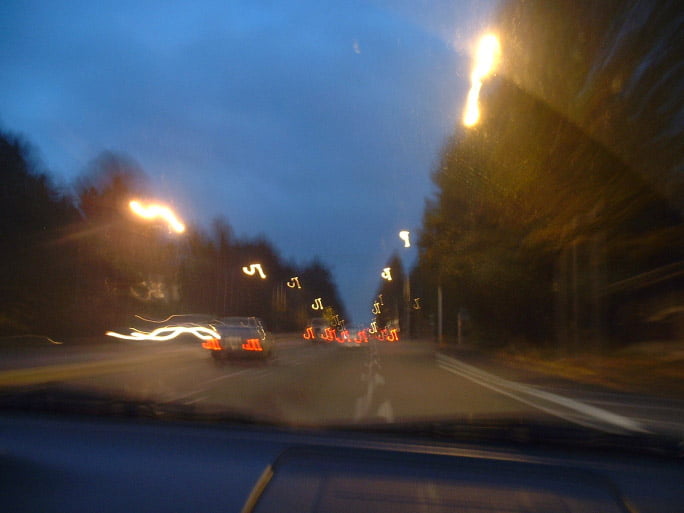Fall Back into Safety: Driving in the Dark
 Once daylight savings ends, the days become shorter and the roads more dangerous. The attorneys at Azrael Franz Schwab & Lipowitz shed light on the hazards of driving at night.
Once daylight savings ends, the days become shorter and the roads more dangerous. The attorneys at Azrael Franz Schwab & Lipowitz shed light on the hazards of driving at night.
Nighttime is arguably the most dangerous time to be on the road. The combination of fatigue, compromised night vision and darkness all contribute to the formula that results in impaired driving and roadway error. According to the National Highway Traffic Safety Administration, fatal accidents occur three times more at night than they do during the day, despite the typical decrease in traffic during these hours. Yet, there are certain methods you can employ to ensure that you are driving as safely as possible at night.
Get Enough Sleep
Per the National Sleep Foundation, nearly 1/4 of adults in the United States say they know someone personally who has fallen asleep at the wheel. Even with busy schedules, most adults need a total of 7-9 hours of sleep before they drive. Individuals who have been up for 24 hours or more should avoid driving overall. Guidelines to follow for long trips include having regular stops for taking short naps and stopping every 100 miles or every 2 hours on the road.
Adjust Your Driving
Daylight Savings ended on November 6 this year. The lack of light that comes with the end of Daylight Savings affects depth perception, color recognition and peripheral vision. Sudden high beams from an oncoming vehicle can behave as a flash and temporarily blind a driver. There are certain ways you can combat darkness to ensure you’re remaining safe and safeguard others as well.
- Use your headlights appropriately and be sure that they are clean
- Do not look directly into oncoming lights
- If you have glasses, consider anti-reflective lenses
- Eliminate streaks by cleaning your windshield
- Slow down to compensate for limited visibility
- Dim your dashboard
Understand the Difficulties of Night Vision for Older Drivers
Night vision, or the ability to see well in low-light conditions, becomes more difficult as years go on. For example, a 60-year old driver may need twice as much light to see as a 30-year old can. Drivers with cataracts and degenerative eye diseases need to be especially aware of the dangers of driving at night. To ensure that you’re practicing safe night-driving as an older driver, consider the following:
- Reduce your speed
- If you’re taking prescription drugs, discuss side effects with your doctor
- Minimize distractions such as radio or talking passengers
- Schedule annual vision exams to keep up with your eye health
- Limit your driving to daytime hours if necessary
Avoid Rush Hour When Possible
Rush hour is a dangerous time to drive, especially at night. Weekdays between 4 p.m. and 7 p.m. can be a hazardous time to drive, with the common impatient drivers eager to get home, crowded roads and lack of sunlight. Some tips offered by the National Safety Council include:
- Stay in your lane and be aware of drivers who switch lanes quickly
- Do not go on autopilot—stay alert even when the route is familiar
- In unfamiliar areas, look up directions and memorize your route before you hit the road
- Do not touch your phone, eat food, drink beverages or do anything else distracting while behind the wheel
- Slow down
Stay Alert for Impaired Drivers
Impaired drivers can wreak havoc on the roads in broad daylight. Add a cold, dark wintery evening to the scenario and the likelihood of a crash increases monumentally. Per the National Highway Traffic Safety Administration: Every day in America, another 27 people die because of drunk driving crashes. Impaired drivers are most frequently on the road at night, particularly between the hours of midnight and 3 a.m., especially on the weekends.
It’s especially important to pay attention to your surroundings while driving at night and remain on the lookout for any reckless behavior in those with whom you share the road. The National Safety Council estimates 38,300 people were killed and 4.4 million injured on U.S. roads in 2015, seeing the largest one-year percentage increase in half a century.
By taking these extra precautions, you can practice safe driving as the nights grow longer and the sun disappears faster. For more information on auto safety during at night, contact the personal injury and auto crash attorneys at Azrael Franz Schwab & Lipowitz today.
